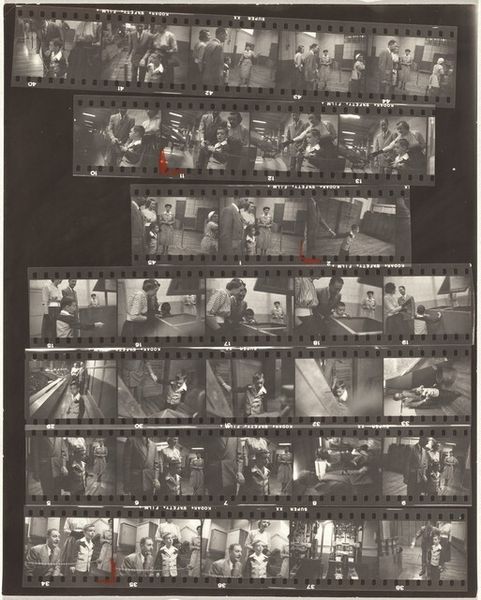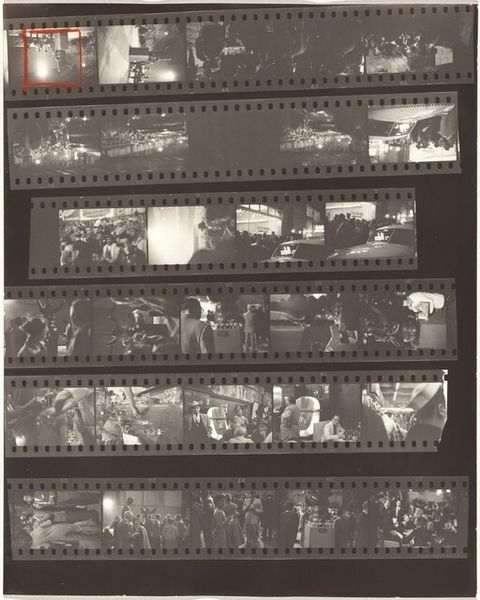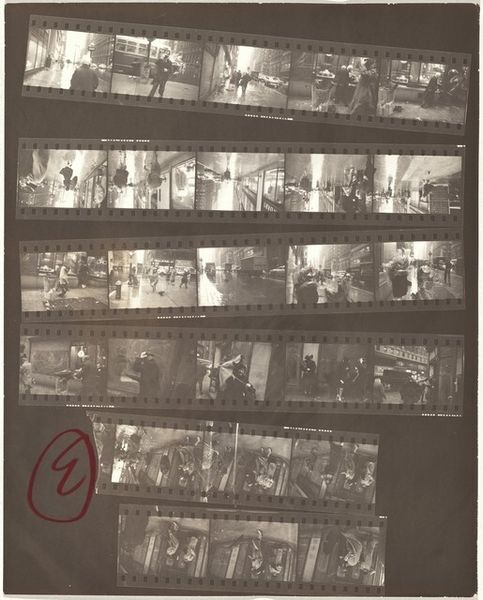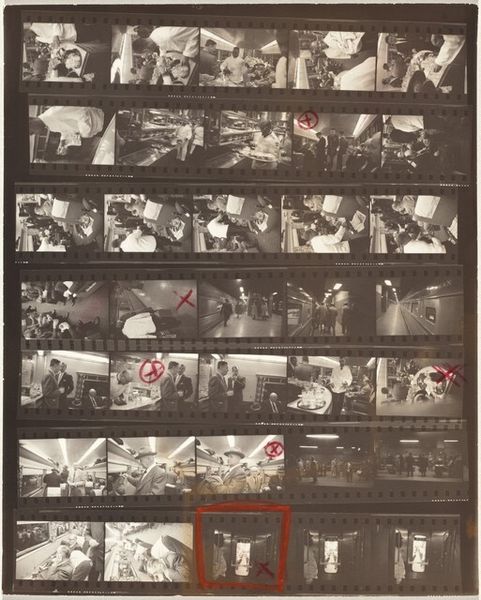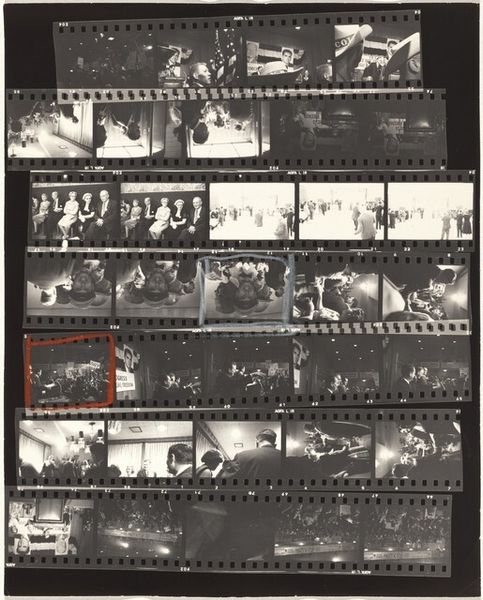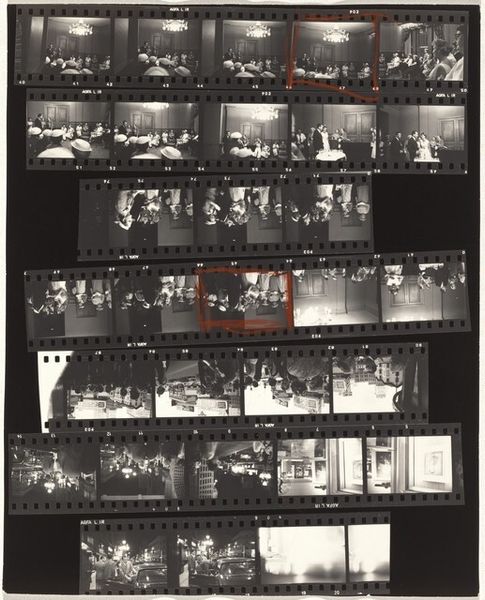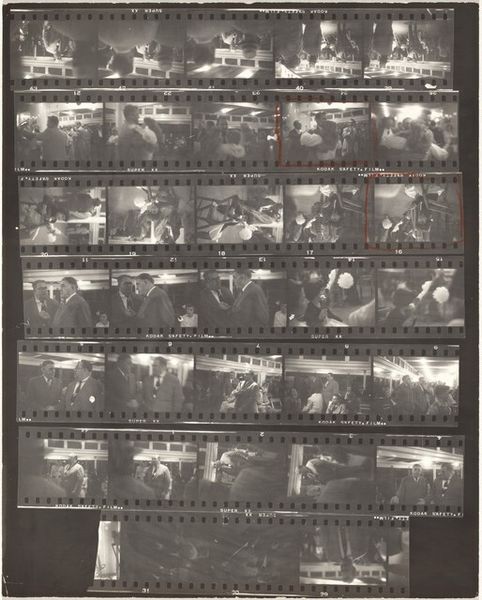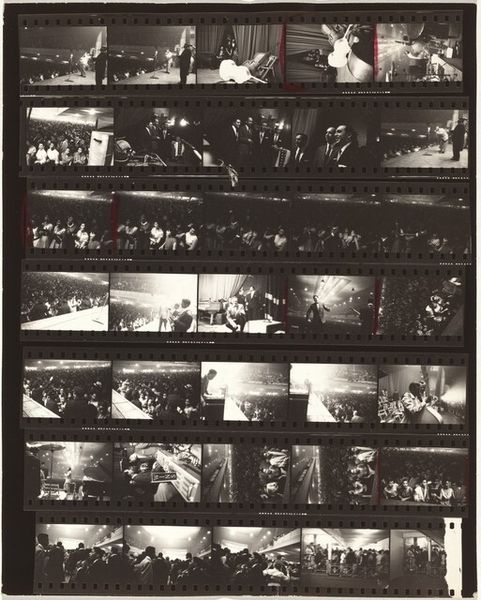
photography, gelatin-silver-print
#
portrait
#
street-photography
#
photography
#
gelatin-silver-print
#
modernism
Dimensions: sheet: 25.2 x 20.3 cm (9 15/16 x 8 in.)
Copyright: National Gallery of Art: CC0 1.0
Curator: Robert Frank's gelatin-silver print, "Congressional M," created circa 1954-1955, gives us a glimpse into post-war America. Editor: It's stark. Bleak, even. The rows of the film strip almost resemble train cars, conveying the sense of rigid routine and transit. It’s heavy on the contrast. Curator: The image does reveal Frank's keen interest in documenting everyday life and the social realities of the time, filtered through a distinctly modernist lens. Consider the post-war context of American political theater. This work gives insights into American congress, bureaucracy, public administration. What socio-economic stories about US does this body of work uncover? Editor: Absolutely. What strikes me is how even within the grid-like order, Frank lets certain frames burst—notice the red marker on the images, designating some, obscuring others. I am wondering whether the redaction contributes to the mood and tone of bureaucratic tension or is this a political comment on free press. How did he pick the moments? How do we respond to images he decided to crop? Curator: Exactly. His choice of subject and stark presentation critique traditional notions of American exceptionalism. What does that critique tell us about racial hierarchies within power structures in mid-century American institutions? This photograph becomes a powerful visual argument about the inherent contradictions within American democracy. This image really demands we address intersectional narrative. Editor: Agreed. It also reveals the inherent constraints and deliberate construction within the artist’s seemingly objective practice, drawing parallels to what is seen and unseen and known and unknown in politics. It speaks of access and transparency, and both. Ultimately, it reminds us how art serves as both reflection and commentary, and its role as an active player, not a neutral record. Curator: Well said, and thank you for drawing our attention to the contemporary political resonances.
Comments
No comments
Be the first to comment and join the conversation on the ultimate creative platform.
